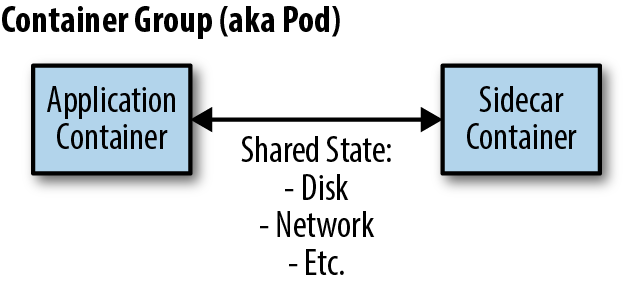Chapter 2. The Sidecar Pattern
The first single-node pattern is the sidecar pattern. The sidecar pattern is a single-node pattern made up of two containers.
The first is the application container. It contains the core logic for the application. Without this container, the application would not
exist. In addition to the application container, there is a sidecar container. The role of the sidecar is to augment and improve
the application container, often without the application container’s knowledge. In its simplest form, a sidecar container can be used to add functionality to a container that might otherwise be difficult to improve. Sidecar containers are coscheduled onto the same machine via
an atomic container group, such as the pod API object in Kubernetes. In addition to being scheduled on the same machine,
the application container and sidecar container share a number of
resources, including parts of the filesystem, hostname and network, and
many other namespaces. A generic image of this sidecar pattern is
shown in Figure 2-1.

Figure 2-1. The generic sidecar pattern
An Example Sidecar: Adding HTTPS to a Legacy Service
Consider, for example, a legacy web service. Years ago, when it was built, internal network security was not as high a priority for the company, and thus, the application only services requests over unencrypted HTTP, not HTTPS. Due to recent security incidents, ...
Get Designing Distributed Systems now with the O’Reilly learning platform.
O’Reilly members experience books, live events, courses curated by job role, and more from O’Reilly and nearly 200 top publishers.

